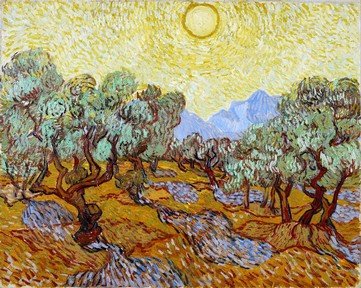Quiz Answer Key and Fun Facts
1. 'Autumn Rhythm' or 'Number 30' is an abstract "drip" painting consisting of black, brown and white enamel paint applied to a plain canvas. Which American artist produced it in 1950?
2. 'Autumn Effect at Argenteuil' shows a river scene with the bright blue of the water contrasted by the brilliant orange and golden colours of the trees overhanging the banks. It was included in the second Impressionist exhibition by which artist who lived at Argenteuil during the 1870s?
3. Although it depicts an American landscape scene, 'Autumn - On the Hudson River' was painted in London in 1860. The artist was which member of the Hudson River School?
4. The 1876 work 'Holyday' shows an autumnal picnic scene that was painted in the garden of the artist's home in St John's Wood, London. Which French artist was responsible?
5. In 1987 an exhibition displaying four large encaustic paintings was held in New York. Each depicted one of the four seasons using silhouetted images of the painter, a clock face with a human arm along with a range of objects and creatures. Which artist was responsible for these works, including 'The Seasons: Fall'?
6. 'Autumn' from 'The Four Seasons', a set of small paintings on copper from the mid-17th century, depicts a man holding a flagon in one hand whilst raising up a drinking cup with the other. It was painted by which Flemish artist who was renowned for his depictions of peasants and country life?
7. The 1885 work 'Autumn Landscape' was painted by one of the most famous Dutch artists of all time during his two year stay in the town of Nuenen. Who was he?
8. 'Fall Plowing' is a 1931 work by an Iowan artist known for his regionalist paintings of people and landscapes of the American mid-west during the Great Depression. Can you name him?
9. The 1908 painting 'Autumn Landscape with Boats' is by which Russian (and later French) artist who was generally credited as one of the first abstract artists and also produced several written works on the theory of art?
10. Two paintings entitled 'The Burning of the Houses of Lords and Commons', an event that took place in October 1834, include the reds and oranges of a typical autumnal painting - but in this case they depict a fiery inferno rather than the colours of falling leaves. They were produced by which British artist commonly known as the 'painter of light' and famed for his land and seascapes?
Source: Author
Fifiona81
This quiz was reviewed by FunTrivia editor
looney_tunes before going online.
Any errors found in FunTrivia content are routinely corrected through our feedback system.
